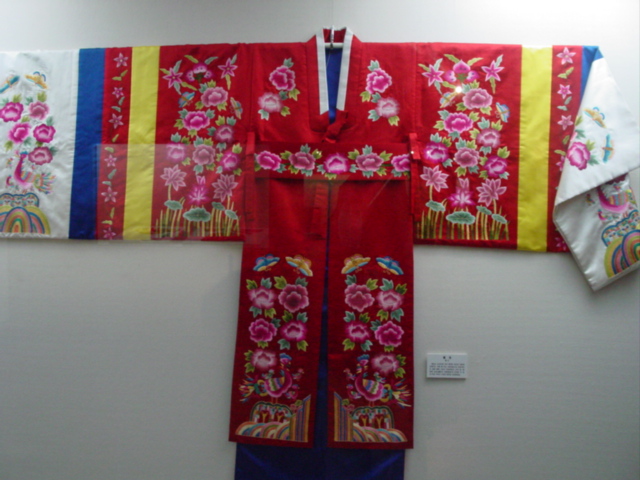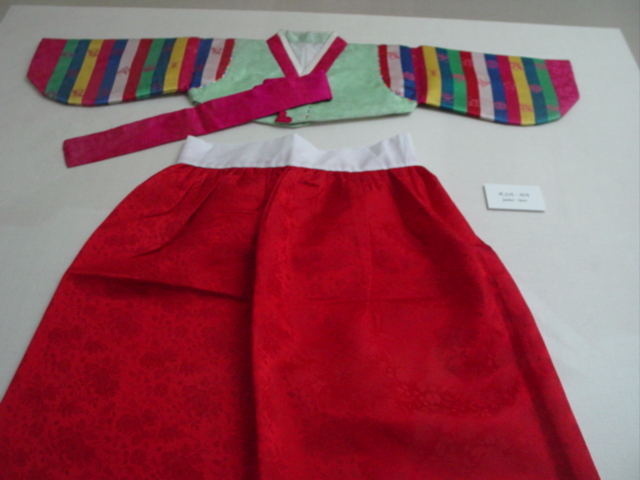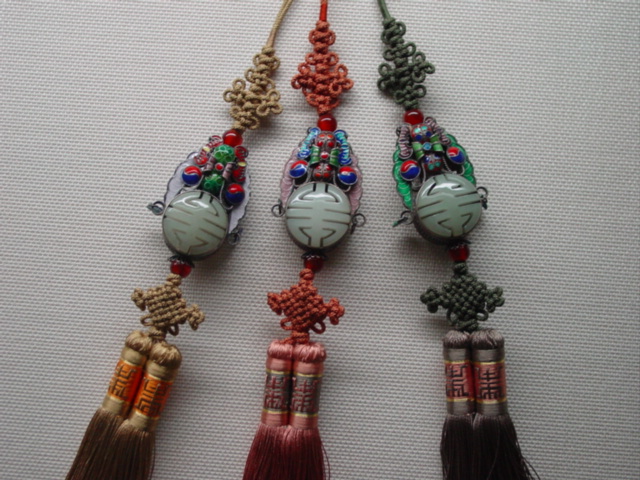|
The Korean Hanbok

Beautiful
Hanbok: Pride of the Korean People
Koreans use "bot"e as a general term for
clothing. Traditional clothing and adornments, on the other hand, are called
"hanbok"-an abbreviation of the term Han-guk pokshik (Korean
attire).
Along with language, religion and cultural patterns such as
dance, food, housing and aesthetics, apparel plays a vital role in the
preservation and expression of cultural identity. In multiethnic nations such as
China and America, styles of traditional attire are diverse.
However, in
countries such as Korea, which are occupied by a single ethnic group,
traditional dress is synonymous with national dress. For this reason, the hanbok
forms a highly effective expression of Korea identity. Thus, changes in hanbok
design from the past to the present parallel the nation's historical
development. Moreover, hanbok's form, materials and designs provide a
glimpse into the Korean lifestyle, while its colors indicate the values and
world view of the Korean people.
Back to Top

Development of Hanbok
Hanbok is apparel of the Caftan type-a style of attire
which is primarily found in Asia. During the Ko Choson
era, Tan-gun popularized shaving of the head and the wearing of hats.
During the Three Kingdoms period, which began with the
founding of Koguryo, hanbok consisted of a
two-piece "unisex" outfit. The upper garments of this period opened in
front and came down below the waist. They were held shut with a belt. The lower
garments were also tied off above the feet. Notably, the opening flap of the
upper garments seems to have been placed on a leftward diagonal from the upper
right-in contrast with the left to right flaps on the chogori
worn today. This change in the direction of the opening flap occurred after the
mid-Koryo period. Among Western apparel, a
right-side flap is used for male attire, while a left-side flap is used for
female attire. Thus, the unisex style popular in the modern period can be said
to have originated in East Asia, whereas the differentiation between male and
female attire is thought to have originated in the West. Ancient Koreans
produced upper and lower garments which were beautiful yet pracitically suited
to the active lifestyle of nomadic hunters.
During the Shilla period, Korean society diversified while
contacts with neighboring countries increased. At this time, Koreans began to
introduce the international fashions of China's Tang Dynasty. Examples include
sleeveless shirts for women, long scarves, decorative hairpins, male headdress
and coats with roung lapels. Elaborate silk clothing and ornaments were other
elements of the refined clothing fashions of the period.
During the KoryCo period, the long
upper garments of the previous period gave way to waist-length attire. As a
result, waist belts were replaced by coat tie-strings. As one of the unique
features of Korean clothing, the coat string was initially a short, thin cord
but eventually developed into the style seen today, i.e., a long, dangling piece
of cloth that hangs down below the knees. Around this time, Tang Dynasty's
fashions became less influential. As Korean society turned to the values of
frugality and simplicity, the calm, tranquil beauty of agriculture life found
expression in the period's famous blue celadon and white clothing. Korean
clothing underwent further refinement as cotton was introduced into Korea from
Yuan China. In addition, clothing regulations were introduced from abroad and a
system of official uniforms was established for the palace.
Back to Top
The beginning of the Choson period
saw the development of a Confucian society. At this time, the use of cotton
became wide-spread. In addition, the period saw the development of a unique
script, known as Han-gul, and the publication
of numerous scholarly compilations. At the same time, there were diverse
developments in the system of ritual attire. Confucianism, as the central
ideology and faith of East Asia, was actively pursued at this time, along with
its system of ritual dress. Ritual clothing represented the visible
manifestation of intangible Confucian virtues such as benevolence, propriety,
wisdom and trust. Since clothing served as a medium for the visible expression
of a rite, it was deemed a very significant form of expression. Hence, Choson
apparel, in addition to its role in delineating social status, represented a
strict conformity to Confucian codes of ritual attire. In particular, a
standardized system of clothing for the various rites of passages was
established in accordance with numerous ritual manuals. Special attire was worn
for the rites of manhood, marriage, mourning and memorial services. Even today,
these clothes can be seen at weddings and funerals, and in particularly
conservative areas, the special clothing for memorial services is still worn.
The traditional dress of Confucian scholars can be seen in the paintings of the
famous Choson folk painter, Shin Yun-bok. In these
paintings, the outer robes are long, yet never touch the ground. Inside the
robes, multiple layers of undergarments can be seen. With wide sleeves hanging
down, the grave-looking scholar sports a broad-rimmed, horse-hair hat.
The late-Choson period saw great
social changes as the common people came to resent the feudalistic system. The
period was also marked by significant changes in values and aesthetics. At this
time, female entertainers took the lead in the new developments in women's
attire. Men's fashions, on the other hand, were primarily influenced by members
of overseas missions, political reformers, overseas students and missionaries.
Folk art depictions of women during this era show them wearing white belts, snug
chogori that show the contour of the breast,
and numerous undergarments exaggerating the volume of the dress. The erotic
beauty of the garments has little precedent in traditional Confucian culture.
The opening of Korea to the West intensified the pace of
change in apparel. Most notably, clothing during this period became much
simpler. During the coup d'etat of 1884 and the Kabo Reform
(1894), clothing specifications for various ceremonies were combined to form a
single ritual attire. The awkward, wide sleeves became narrower and male
top-knots were cut off. Among woman's attire, undergarments as well as
concealing vestments such as the ssugaech'ima
(shawl), chang-ot (hood) and noul (veil)
gave way to a more practical, short coat.
The disappearance of traditional attire during the process of
modernization has been explained in relationship to economic development.
Nations which have industrialized and developed economically have given up their
traditional clothing, as part of their everday dress, at a more rapid rate than
economically backward nations. In Korea, the hanbok began to disappear as
everyday dress in the 1960s and came to be used only during rituals. As for
traditional ritual attire, only marriage and mourning clothing have survived.
Traditional hanbok are now only seen on special traditional events such
as folk festivals, shamanic kut, historical dramas or reenactments of
palace rituals.
In short, the hanbok has undergone many changes but has
generally consisted of elements still evident in hanbok today, i.e.
pants, outer coat, skirt, and soon. Among the hanbok's different forms,
ritual clothing has traditionally taken precedence. During its development, the hanbok
acquired some elements from neighboring nations, while changing to suit the
particular needs of the times.

Back to Top
Korea
Travel Guide
Information
provided by the Korean Embassy
|